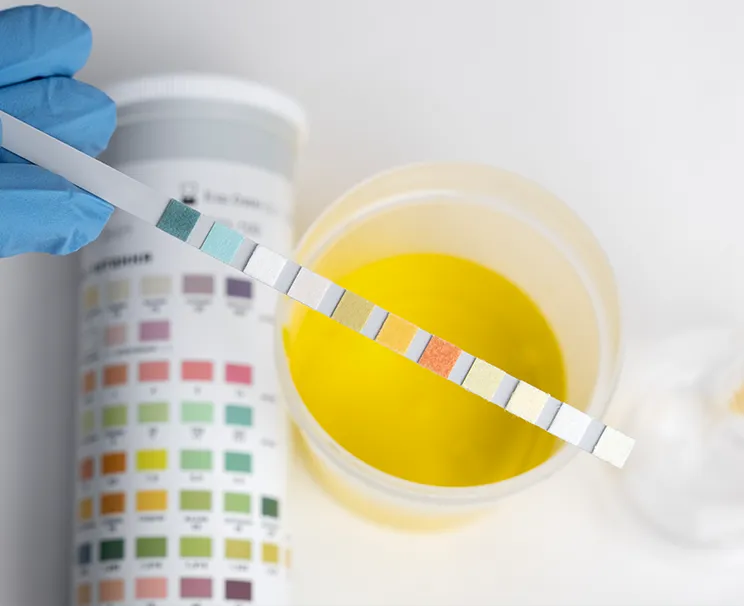Ultrasonography in pregnancy is one of the most frequently used imaging methods to closely monitor the health of the baby and the expectant mother. Thanks to high-frequency sound waves, detailed information can be obtained about the baby’s growth process in the womb.
Ultrasonography in pregnancy is applied at different weeks to examine important data such as the baby’s growth rate, organ development, and the amount of amniotic fluid. This method is valuable in understanding whether the pregnancy is progressing healthily and in detecting possible risky pregnancies at an early stage. Since there is no radiation during the procedure, it is considered a safe practice for both mother and baby. It can be repeated at intervals determined by the physician depending on medical necessity.
What is Ultrasonography in Pregnancy?
Ultrasonography in pregnancy is one of the main imaging methods used to evaluate the condition of the expectant mother and the baby during pregnancy. This method provides images of the uterus through high-frequency sound waves.
The purposes of ultrasound use during pregnancy are varied. For example, it is commonly preferred to monitor the baby’s development, evaluate organ formation, and detect possible anomalies at an early stage.
It can also help diagnose ectopic pregnancy or assist in risk assessment of chromosomal disorders such as Down syndrome.
The data obtained through ultrasonography devices may, in some cases, provide critical clues about the overall health of the baby and mother. These examinations should always be performed by experienced physicians and specialists in the field.

An ultrasound examination during pregnancy can be used for the following purposes:
- Determining the correct gestational age
- Evaluating the baby’s position and heartbeat
- Detecting structural problems that may pose risks to the baby’s health
- Measuring the position of the placenta and the amount of amniotic fluid
Ultrasound examination not only visualizes the current condition but is also effective in detecting complications that may arise in the coming weeks. In this way, necessary precautions can be taken early.
In short, ultrasonography in pregnancy is an important medical tool in pregnancy monitoring, birth planning, and identifying possible risks. When performed at regular intervals and in accordance with medical requirements, it provides safe information for both mother and baby.
What Can Be Detected in a Pregnancy Ultrasound?
Ultrasound examinations performed during pregnancy are of great importance in evaluating the baby in the womb and monitoring the developmental process. Especially screenings performed at specific weeks help to understand whether the pregnancy is progressing healthily. Many important data about the baby and the mother are obtained during these examinations.
For example, a detailed ultrasound examination can reveal the baby’s organ structures, developmental level, and possible anomalies. The information obtained from a detailed ultrasound allows the necessary medical measures to be taken before birth.
The main elements that can be detected during these check-ups are:
- The baby’s position and movements in the womb
- The condition of the placenta, i.e., its position and structural characteristics
- Results of color Doppler ultrasound to examine blood circulation and vascular structures
- Detailed evaluation of organs such as the brain, heart, and kidneys depending on how the detailed ultrasound is performed
These findings help plan measures to protect the health of both the baby and the mother during pregnancy. With regular ultrasound follow-ups, possible risks can be identified at an early stage, ensuring a safe process until delivery.
Sıkça Sorulan Sorular
Ultrasonography, which does not contain radiation and works with sound waves, is considered safe. When performed under medical supervision, it has no adverse effects on the mother or the baby.
The baby’s developmental status, organ structures, and placenta position are evaluated. In addition, the amount of amniotic fluid and possible structural differences are examined.
While ultrasound refers to the device, ultrasonography defines the entire imaging procedure. Therefore, technically, there is a difference in meaning.
Uterine tissues, wall thickness, and possible masses can be visualized. In pregnancy, the baby’s development and the placement of the placenta are evaluated.
Abdominal ultrasound provides imaging with sound waves, so it does not harm the baby. It can be safely applied when medically necessary.
BPD, FL, and AC refer to certain measurements of the baby. These measurements give an idea about gestational age and developmental progress.
In most cases, no special preparation is required; however, in the early weeks of pregnancy, it may be preferable for the bladder to be full.
For safe and scientific ultrasonography services during pregnancy, you can contact Denge Tıp.










